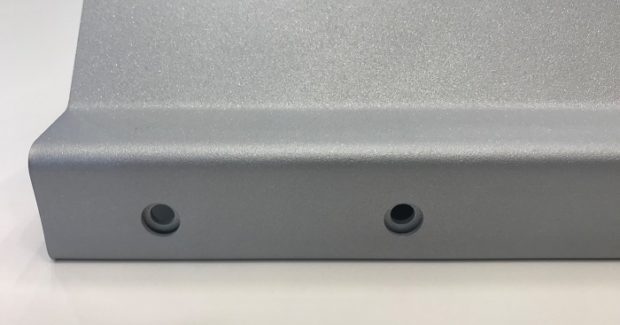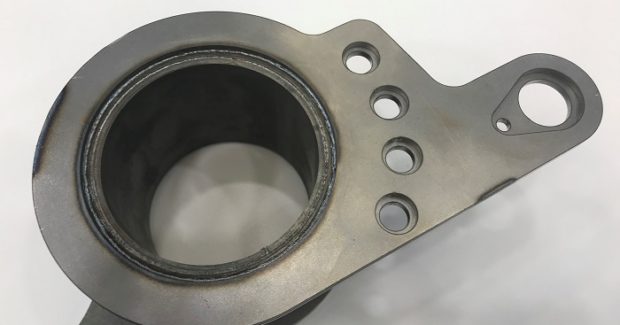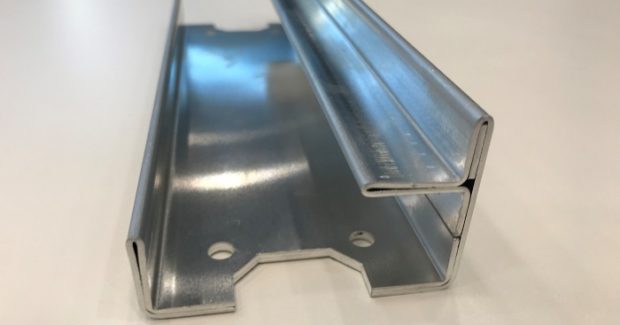More Than One Way to Skin a Part: Where Fabrication and Machining Overlap
Don’t take the “hard limits” between machining and fabrication for granted. Their areas of overlap offer tremendous potential for savings. If you manufacture parts using both processes, take a second look at some of them to evaluate whether they could be produced more economically with a little sheet metal know-how and some outside-the-box thinking.
Posted: April 13, 2019
The common wisdom in metal component manufacturing tends to be that some parts are designed for sheet metal fabrication and some parts are designed for machining, and never the twain shall meet. It is true that the different capabilities of these manufacturing processes are certainly geared towards different families of parts. Nonetheless, there are many components that go into all kinds of products that could potentially be manufactured through machining or sheet metal fabrication processes. In some cases, depending on the required tolerances or the shape of the finished part, machining will be the only practical way to proceed. In other situations, fabrication equipment such as laser cutters and punching machines can deliver much higher productivity and much better material utilization than chip-making equipment. A little bit of creativity and a solid understanding of the capabilities of each manufacturing process can dramatically reduce the cost to deliver a part.
Let’s take a look at a few examples of components that would traditionally be considered machined parts but nevertheless can be produced by fabrication processes in shorter times and at lower costs.
One example of a very common machining process is “pocketing,” where a cut must be made in a component to a specific depth but not all the way through the material. Such features may be required due to aesthetic or functional considerations in the finished product. At first glance, this type of feature on a part would rule out sheet metal processing because sheet metal cutting machines like lasers and punches are not so flexible at selectively removing material to a specific depth. Still, there are ways to achieve the same finished shape with sheet metal. One obvious way is by layering sheet metal components: A stack of plates with different cut geometries laid over top of one another can create the same effect as a single piece of thicker material that has been pocketed. A component created by layering in this way may be held together with welds or fasteners, but in any case, the assembly of the layers must be considered as the drawback to this process compared to machining a single piece.
On the other side of the scales, the productivity that is possible with cutting contours in fabricated sheet metal can very often outweigh the cost of the additional step to join the layers together. Especially when this process utilizes solid-state laser systems that achieve very high cutting feed rates in thin material, the overall production throughput of cutting and stacking sheet metal layers compared to machining can be several times greater over a given period. Another way to create pocket-like features in sheet metal components is by taking advantage of folding or hemming operations at a press brake. Taking a cut part and then folding it over onto itself can create the same effect as layering individual cut pieces, but has the advantage that additional joining steps (welding or fastening) may not be required. Hemming operations on components are often used to stiffen thin gauge material or to create edges that are rounded to avoid cutting people that must work around the finished product (such as the exposed edges inside of metal cabinets).
This only scratches the surface of what hemming can do for part design. Consider the counterbore, another very commonplace feature in metal component manufacturing. Necessary in many products to provide a place for the head of a fastener to rest without protruding from a finished surface, counterbores are often cut with machining centers or, in the case of fabricated parts, they may be formed with a punch machine. Hemming can also be used to produce a counterbore in a part that has been laser cut: After the part has been folded over, two different sized holes falling over top of each other give the same result as machined or formed counterbores.
Another area where fabrication processes can offer tremendous advantages over chip-making is in the production of structural components. There are many instances where metal structures that would be produced from structural steel or extruded aluminum can be directly replaced with fabricated sheet metal designs. To make this type of switch work, a press brake with good accuracy is a must. Offline software that can help you visualize the forming process is also critical to making the switch fast and economical, so you don’t spend a lot of time trying out designs on your factory floor and tying up your fabrication equipment non-productively. A lot of fabricators already have these sorts of tools available and, if you are one of them, it could be very worthwhile to go looking for components that you currently produce using structural material with an eye toward fabricating them instead.
An additional area that tends to be extremely time-consuming and costly for many shops is the production of tubular components. Due to the excellent properties of metal tubing, especially the inherently high strength-to-weight ratio of tubes, many designers have been moving to incorporate tube structures into their products. To create these tube components often requires a whole series of production steps: Cutting to length on a saw, making holes on a drill press, tapping or inserting hardware, notching and contouring with a machining center. Each of these discrete manufacturing steps introduces a potential for mistakes and scrap, along with a lot of non-productive material handling and setup time involved in moving the components through the whole process. Laser cutting offers the possibility to drastically reduce the number of production steps to make a tubular component. Even flatbed laser cutting machines that are dedicated to sheet working can be jigged to accept tube parts and, despite the setup effort required, this process can still save a lot of production time if it eliminates two or three discrete steps like drilling and notching.
Flatbed laser cutting machines that include a rotary axis make this even easier, along with dedicated tube-cutting lasers that are truly full-service machines: Cutting to length, beveling for weld preparation, creating hole patterns and contours, even flow drilling and tapping as needed. These types of machines can literally reduce the time to make a tube assembly from hours to minutes. The upshot of all this is that it pays to not take for granted the “hard limits” between machining processes and fabrication processes. The areas where these processes overlap offer a tremendous potential for savings. If your shop manufactures parts with both types of technology, consider taking a second look at some of those components and evaluating whether they could be produced more economically with just a little sheet metal know-how and some outside-the-box thinking.













